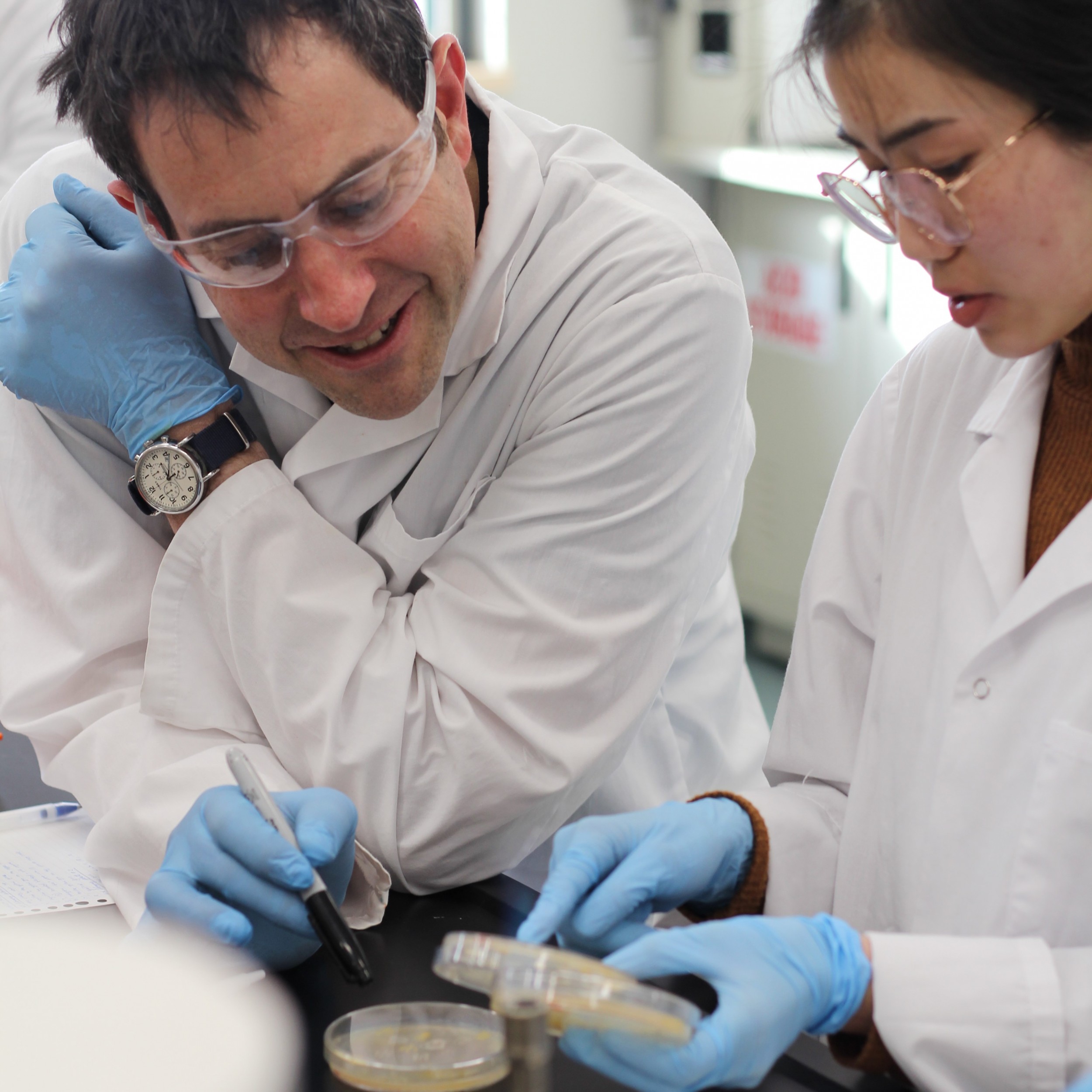News and Releases

Stories
CMU students connect to global project
By Dr. John Brubacher, Associate Professor of Biology | Wednesday, June 19, 2024 @ 11:28 AM | Stories

Near the end of a research leave that I spent at the University of Wisconsin-Madison, I had the opportunity to train as a partner instructor in the Tiny Earth program that's headquartered there. This program, launched in 2018, is a microbiology lab curriculum being pursued by a growing international network of students and instructors. The program's goal is to "studentsource" the discovery of new antibiotics—one avenue of response to the emerging crisis of antibiotic resistance in disease-causing bacteria. Tiny Earth is the brainchild of one of my scientific and pedagogical heroes: Jo Handelsman, a soil microbiologist and director of the Wisconsin Institute for Discovery at UW Madison.
The 17 students in my Microbiology I course in winter of 2023 worked with me to integrate Tiny Earth into the lab curriculum for that course. The basic idea is straightforward. Students isolate pure strains of bacteria from a soil sample. We used about a quarter teaspoon of humus from the woods just south of the Director of Student Life's residence on the CMU campus. Each student assembles a library of about 20 strains of soil bacteria, and screens these strains for antibiotic production by growing them on lawns of "tester strain" bacteria. The tester strains are non-pathogenic relatives of species that have been identified by the World Health Organization as pathogens of critical concern. From these screening experiments, students identify soil isolates that inhibit the growth of one or more tester strains: those isolates are producing something that is acting as an antibiotic.
 Dr. John Brubacher, Associate Professor of Biology, has worked with students to identify nine strains of interest in part of the international Tiny Earth research network.
Dr. John Brubacher, Associate Professor of Biology, has worked with students to identify nine strains of interest in part of the international Tiny Earth research network.Over the semester, the students learn the microbiological skills and techniques that are standard for an introductory microbiology course. But they learn in the context of doing real science, asking questions that no one knows the answer to, and seeing where their observations lead them. Students are engaged and empowered by participating as scientists in a project of genuine public interest. Studies of such course-based undergraduate research experiences routinely demonstrate the benefits of this discovery-based approach.
The 2023 iteration of Microbiology I, plus three biology students who continued the project in independent-study courses this past fall, have so far identified nine strains of interest from local soil. The likelihood of any of these nine being the source of a new antibiotic is quite low, but the growth of the Tiny Earth network around the world greatly increases the odds of discovering something useful. Along the way, students may also gain a new appreciation for some timeless theological lessons, about the beauty and complexity of small things, and of the need to use the gifts of the soil reverently and wisely.
For more information and updates on Tiny Earth, see tinyearth.wisc.edu.
This story was featured in the Summer 2024 issue of The Blazer magazine.
KEYWORDS: science, biologhy, Tiny Earth, Jo Hnadelsman, bacteria, antibiotics, research, microbiology

 Print This Article
Print This Article